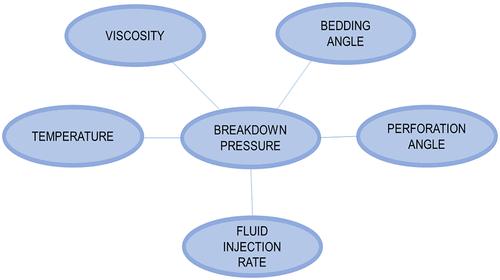当前位置:
X-MOL 学术
›
Energy Fuels
›
论文详情
Our official English website, www.x-mol.net, welcomes your
feedback! (Note: you will need to create a separate account there.)
Supercritical Carbon Dioxide Utilization for Hydraulic Fracturing of Shale Reservoir, and Geo-Storage: A Review
Energy & Fuels ( IF 5.2 ) Pub Date : 2023-09-25 , DOI: 10.1021/acs.energyfuels.3c02399
Nikita Gupta 1 , Amit Verma 1
Energy & Fuels ( IF 5.2 ) Pub Date : 2023-09-25 , DOI: 10.1021/acs.energyfuels.3c02399
Nikita Gupta 1 , Amit Verma 1
Affiliation

|
Hydraulic fracturing has completely revolutionized how shale resources are exploited to extracthydrocarbons. However, sustainability and environmental issues have fueled the desire for alternate fracturing technologies. Supercritical carbon dioxide (Sc-CO2) fracturing is a new method that uses high-pressure, high-temperature CO2 in its supercritical state (7.38 MPa and 31.1 °C) to generate fractures in shale formations, thereby increasing reservoir permeability. This Review thoroughly analyzes the effects of Sc-CO2 on shale reservoirs during the fracturing process, including the factors that affect fracture breakdown pressure and the complexity and roughness of fracture induced by Sc-CO2. Sc-CO2 can fracture rock at a fracturing pressure lower than that of slick water. CO2, in its supercritical state, shows strong permeability, low viscosity, and extremely low surface tension, like gas, because of which it can infiltrate any space larger than its kinetic diameter (0.330 nm). Many research investigations illustrate how Sc-CO2 affects shales with diverse pore structures, mineral compositions, and mechanical properties when exposed to Sc-CO2 for several hours to days. It is challenging to effectively store CO2 in shale gas reservoirs due to their low permeability and limited storage capacity. To improve the effectiveness of CO2 storage, shale can be fractured to increase the pore space and surface area in reservoirs. Thereby, a certain amount of the CO2 pumped for shale gas production can be securely stored in shale formations, reducing carbon emissions and allowing for a zero-carbon footprint. This paper discusses the pathway and different chemical reactions involved in the storage of CO2 after fracturing over a period. However, fully understanding the interactions between Sc-CO2 and shale rock and the possibility of long-term storage of CO2 in shale formations is quite challenging. It is because of a lack of research and limited knowledge in the above field. Hence, more investigation and development are required in the research area of Sc-CO2 fracturing and the interaction of CO2 with shale rock.
中文翻译:

页岩油藏水力压裂利用超临界二氧化碳和地质封存:综述
水力压裂彻底改变了页岩资源开采碳氢化合物的方式。然而,可持续性和环境问题激发了人们对替代压裂技术的渴望。超临界二氧化碳(Sc-CO 2)压裂是利用高压、高温CO 2在超临界状态(7.38 MPa、31.1 ℃)下在页岩地层中产生裂缝,从而提高储层渗透率的新方法。本文深入分析了Sc-CO 2压裂过程中对页岩储层的影响,包括影响裂缝破裂压力的因素以及Sc-CO 2 诱发裂缝的复杂性和粗糙度。钪CO 2可以在低于滑水的破裂压力下使岩石破裂。CO 2在超临界状态下,与气体一样具有很强的渗透性、低粘度和极低的表面张力,因此可以渗透任何大于其动力学直径(0.330 nm)的空间。许多研究表明,当暴露于 Sc-CO 2 数小时至数天时,Sc-CO 2 如何影响具有不同孔隙结构、矿物成分和机械性能的页岩。由于页岩气储层渗透率低且封存能力有限,因此在页岩气藏中有效封存CO 2具有挑战性。提高CO 2的有效性储存时,页岩可被压裂以增加储层的孔隙空间和表面积。因此,为页岩气生产而泵送的一定量的CO 2可以安全地储存在页岩地层中,从而减少碳排放并实现零碳足迹。本文讨论了压裂一段时间后CO 2封存的途径和不同的化学反应。然而,充分了解Sc-CO 2与页岩之间的相互作用以及CO 2在页岩地层中长期储存的可能性是相当具有挑战性的。这是因为在上述领域缺乏研究和知识有限。因此,Sc-CO的研究领域需要更多的研究和发展2压裂及CO 2与页岩的相互作用。
更新日期:2023-09-25
中文翻译:

页岩油藏水力压裂利用超临界二氧化碳和地质封存:综述
水力压裂彻底改变了页岩资源开采碳氢化合物的方式。然而,可持续性和环境问题激发了人们对替代压裂技术的渴望。超临界二氧化碳(Sc-CO 2)压裂是利用高压、高温CO 2在超临界状态(7.38 MPa、31.1 ℃)下在页岩地层中产生裂缝,从而提高储层渗透率的新方法。本文深入分析了Sc-CO 2压裂过程中对页岩储层的影响,包括影响裂缝破裂压力的因素以及Sc-CO 2 诱发裂缝的复杂性和粗糙度。钪CO 2可以在低于滑水的破裂压力下使岩石破裂。CO 2在超临界状态下,与气体一样具有很强的渗透性、低粘度和极低的表面张力,因此可以渗透任何大于其动力学直径(0.330 nm)的空间。许多研究表明,当暴露于 Sc-CO 2 数小时至数天时,Sc-CO 2 如何影响具有不同孔隙结构、矿物成分和机械性能的页岩。由于页岩气储层渗透率低且封存能力有限,因此在页岩气藏中有效封存CO 2具有挑战性。提高CO 2的有效性储存时,页岩可被压裂以增加储层的孔隙空间和表面积。因此,为页岩气生产而泵送的一定量的CO 2可以安全地储存在页岩地层中,从而减少碳排放并实现零碳足迹。本文讨论了压裂一段时间后CO 2封存的途径和不同的化学反应。然而,充分了解Sc-CO 2与页岩之间的相互作用以及CO 2在页岩地层中长期储存的可能性是相当具有挑战性的。这是因为在上述领域缺乏研究和知识有限。因此,Sc-CO的研究领域需要更多的研究和发展2压裂及CO 2与页岩的相互作用。































 京公网安备 11010802027423号
京公网安备 11010802027423号